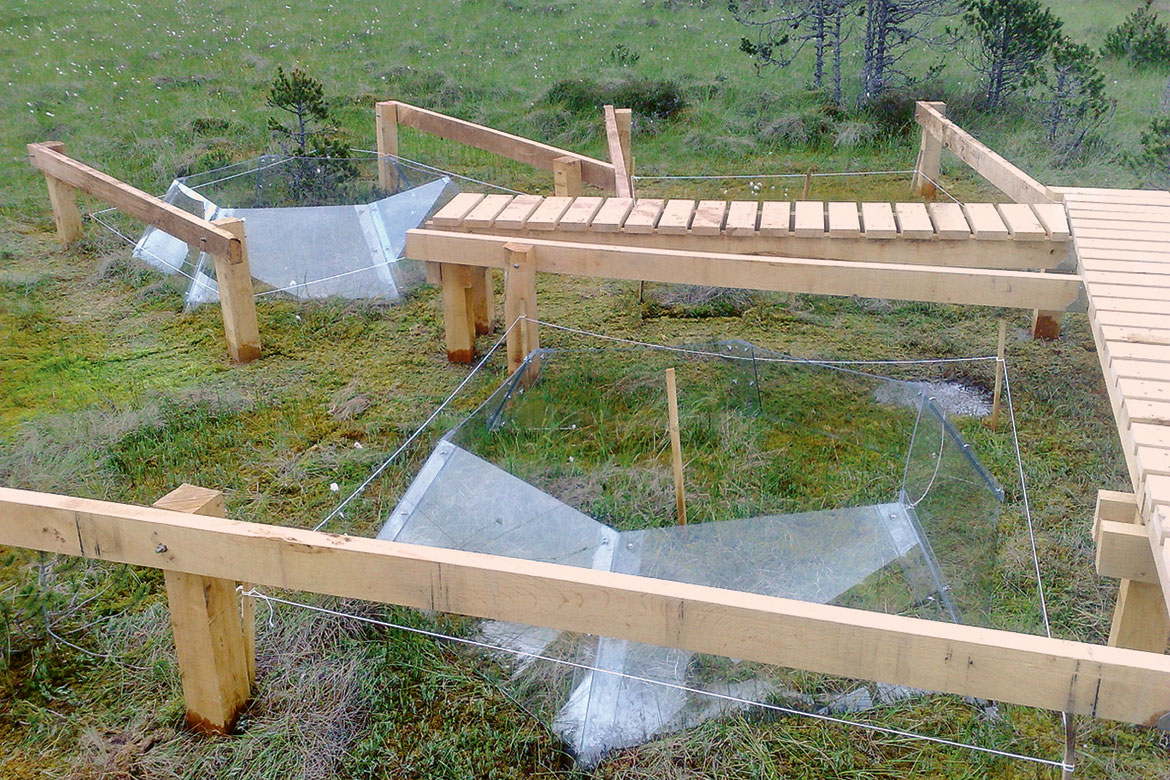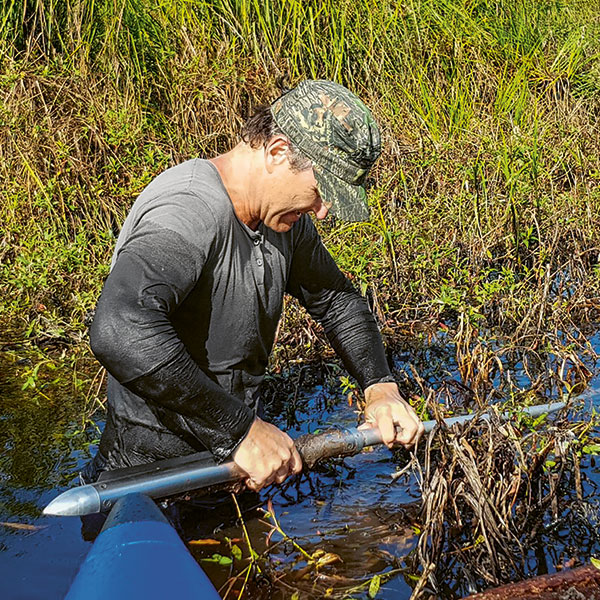Peatlands are resilient to climate change
Peat bogs are real CO2 traps. If they are safeguarded, they can help reduce the impact of climate change.

Plexiglass greenhouses with an open roof to simulate warming in the peat. | Image: Vincent Jassey
“There is an urgent need to preserve peat bogs, which store large quantities of CO2 and thus contribute to reducing the greenhouse effect”, warns Vincent Jassey, a CNRS researcher in Toulouse, France. Alongside Constant Signarbieux of the University of Neuchâtel, Jassey has studied the impact of global warming on the assimilation of CO2 from two dominant species of sphagnum moss (Sphagnum fallax and Sphagnum medium) found in the Forbonnet peat bog in the French Jura between 2009 and 2013. Their research is based on six experimental devices simulating in situ a warming of 1°C to 2°C on average per year, in line with climatologists’ predictions.
This ecosystem has maintained a carbon-neutral balance in the face of high temperatures and frequent droughts. Whereas S. fallax is sensitive to drought and reduces its carbon assimilation, S. medium showed remarkable resistance to drought thanks to anatomical characteristics that allow it to store water. On the other hand, when it is warmer but not dry, S. fallax increases photosynthesis, while S. medium responds negatively. It is thanks to this complementarity of the species present that the peat bog has adapted to warming.
“It’s reassuring”, says Jassey. But if expectations for the increases in the frequency, intensity and duration of drought periods are to be beaten, we don’t know yet what the effect on the carbon balance of these sphagnum mosses would be. Hence the importance of not weakening these biotopes in advance, for example by draining the soil, which dries them out”.




